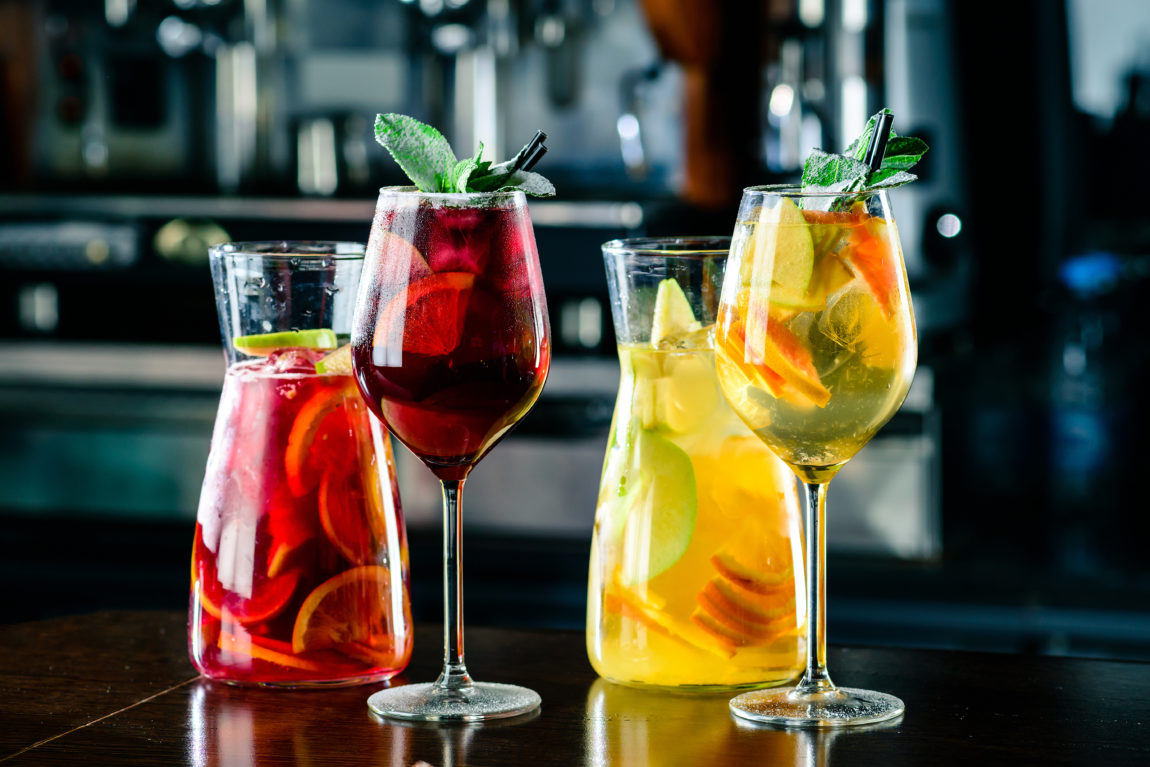Do you prefer sweet wines? Just because everyone has a glass of Chardonnay or Cabernet Sauvignon in their hand doesn’t mean you have to divert to beer or a mixed drink when dry, tannic, and chewy wines aren’t your thing. Good quality sweet wines not only exist, but they also provide the perfect excuse to indulge in something a bit more refreshing or decadent. Truth be told, since most people talk dry, but drink sweet, you’ll likely have your whole crew following your lead to get that fix of residual sugar!
Sweeter Wine Cocktails
One of my favorite wine cocktails is a White Port & Tonic (one part White Port, one part Tonic Water, pour over ice and garnish with a small orange slice). I’ve poured this at so many tastings and events and the result is the same every time – empty glasses and a newfound obsession with White Port. Another favorite party-starter is a nice quality pre-made Sangria (red or white). While some die-hards swear by recipes made from scratch, I like the convenience of just popping open the bottle and jazzing it up in the glass with some fresh fruit and a splash of soda water. There are plenty of good options on the market and your local wine shop can direct you to something more quality driven.
Sweeter Wines with Dinner
Sweet wines paired with savory dinners can pose quite a challenge. However, I always remind myself that if a person likes a certain style of wine, they’ll generally enjoy an unconventional pairing much more than participating in a traditional pairing with a style of wine they don’t like. I’ve found that Lambrusco can be a hit with Italian food among sweet wine lovers. Lambrusco can range anywhere from dry (secco) to sweet (dolce), but I’ve had the most luck with a semi-sweet style when striving for a complementary pairing. If you find Lambrusco to be too sweet and want something sans frizzante, you might want to give an Amarone (or its more affordable version – a Ripasso style Valpolicella) a try. Sometimes classified as more of an off-dry style, this decadent red Italian wine can be a lovely partner to most savory dishes due to its lush and more raisinated profile.
Another lesser known red option is a German varietal called Dornfelder. Dornfelder can easily be poured in place of Zinfandel when pairing with burgers and can even round out steak and chicken if you prefer a sweeter wine as opposed to traditional pairings of dry Bordeaux or Burgundy. Finally, not to be overshadowed by its red counterparts, we have one of the greatest sweeter wines built for pairing. It just happens to be white, and is none other than the incredibly mouth-watering and versatile Riesling. Put it this way, there’s always a bottle of sweeter-style (usually Spätlese) Riesling on my Thanksgiving table and it’s generally the first to be emptied into eagerly awaiting glasses. As we know, a holiday table has a huge range of flavorful dishes, and Riesling stands up to the challenge every time.
Sweeter Wines with Dessert
Ready for dessert? This is where sweet wines truly shine and the pairings are abundant and delicious! Who can resist Moscato D’Asti with a fruit tart; Brachetto with anything chocolate; or Sauternes with a salty cheese plate or a rich and creamy cheesecake? I’ll keep going……Ruby Port with a dark chocolate raspberry cake; Vin Santo with biscotti; and even a well-made Cream Sherry with apple pie. While the list goes on and on, one important rule to follow is to have the wine sweeter than the dessert (otherwise you run the risk of the wine tasting bitter).
So for all of you sweet wine lovers, keep drinking the wines that you actually enjoy. Perhaps you’ll even leave the door open to explore other noteworthy wine flavor profiles in the future. Wine is such a fun adventure, and we’re happy you’re along for the ride.
*This post was written for my Father who is decidedly not a fan of dry wine, but has an unwavering predilection for all things sweet.
**Photo image courtesy of Adobe Stock




